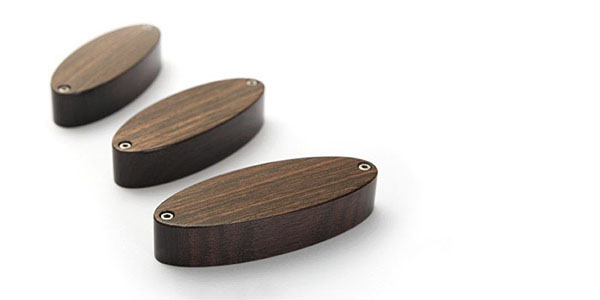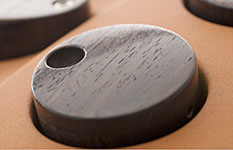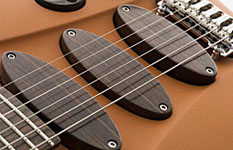
 |
The neck and middle pickup of the niwa is a split coil. It consists of two offset bobbins. One bobbin picks up the bass strings while the other picks up the treble strings. Since both bobbins are wound in reverse there is no hum. The sound of the pickup is very guttural, but much richer than a strat single coil tone. The same pickup is placed in the middle position. The bridge pickup is made in the same way but its sound is a much hotter and a different winding scheme. The magnets I use are AlNiCo5 and AlNiCo8 types which were custom made according to my specifications. All components are made in my workshop and, of course, the bobbins are wound here, as well. Finally the pickups are sealed against microphonic feeback in high vacuum chamber. The sealing substance which I use for this has much less influence on the sound than wax would. All of the electric compartments are shielded to keep out magnetic and electric field interferences. The shielding I use is the same one that is used for premium CRT displays. After all, even the smallest static would be visible on the screen. The DC shielding resistance is less than 6 Ohms spread over the whole compartment. |
|
 |
There are master volume, master tone and a 5-way rotary switch to control the electronics. You can adjust whether the volume pot should run roughly or smoothly. | ||
 |
The tone pot is configured as a push-push pot, so it works as a bypass for the bridge pickup. When the knob is down you have the sounds of the rotary switch. When the knob is up you always play the bridge pickup whatever position the rotary switch shows. | ||
 |
The pickup switch allows these combinaitions: neck / neck+middle / neck+bridge / middle / middle+bridge . The bridge pickup solo gets switched by the push-push only. All in all you have six different sounds. |
||
| copyright by Ulrich Teuffel | |||